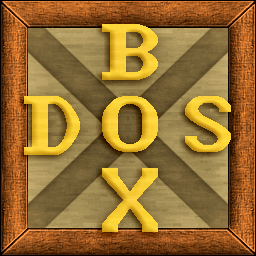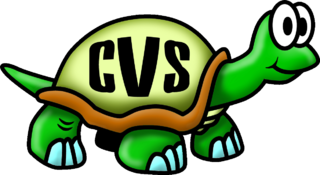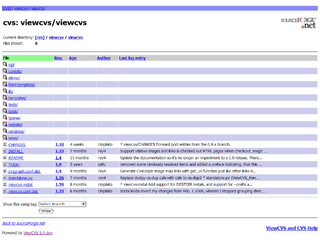StatCVS is an open source program written in Java that generates graphical reports about CVS modules. It reveals, for example, which developer has made the most check-ins to the repository, and plots the development of the lines of code (LOC) of the entire module and individual folders over time.

Java is a general-purpose computer-programming language that is concurrent, class-based, object-oriented, and specifically designed to have as few implementation dependencies as possible. It is intended to let application developers "write once, run anywhere" (WORA), meaning that compiled Java code can run on all platforms that support Java without the need for recompilation. Java applications are typically compiled to bytecode that can run on any Java virtual machine (JVM) regardless of computer architecture. As of 2016, Java is one of the most popular programming languages in use, particularly for client-server web applications, with a reported 9 million developers. Java was originally developed by James Gosling, a Canadian, at Sun Microsystems and released in 1995 as a core component of Sun Microsystems' Java platform. The language derives much of its original features from SmallTalk, with a syntax similar to C and C++, but it has fewer low-level facilities than either of them.

A document that presents information in an organized format for a specific audience and purpose. Although summaries of reports may be delivered orally, complete reports are almost always in the form of written documents.
The Concurrent Versions System (CVS), also known as the Concurrent Versioning System, is a free client-server revision control system in the field of software development. A version control system keeps track of all work and all changes in a set of files, and allows several developers to collaborate. Dick Grune developed CVS as a series of shell scripts in July 1986.
StatCVS uses JFreeChart to generate charts. It is licensed under the GNU General Public License.

JFreeChart is an open-source framework for the programming language Java, which allows the creation of a wide variety of both interactive and non-interactive charts.

The GNU General Public License is a widely used free software license, which guarantees end users the freedom to run, study, share and modify the software. The license was originally written by Richard Stallman of the Free Software Foundation (FSF) for the GNU Project, and grants the recipients of a computer program the rights of the Free Software Definition. The GPL is a copyleft license, which means that derivative work can only be distributed under the same license terms. This is in distinction to permissive free software licenses, of which the BSD licenses and the MIT License are widely used examples. GPL was the first copyleft license for general use.
StatSVN is an extension to StatCVS that generates the same reports but for the activity of a Subversion repository.
This page is based on this
Wikipedia article Text is available under the
CC BY-SA 4.0 license; additional terms may apply.
Images, videos and audio are available under their respective licenses.

Apache Subversion is a software versioning and revision control system distributed as open source under the Apache License. Software developers use Subversion to maintain current and historical versions of files such as source code, web pages, and documentation. Its goal is to be a mostly compatible successor to the widely used Concurrent Versions System (CVS).

SmallBASIC is a BASIC programming language dialect with interpreters released as free software under the GNU General Public License version 2.

DOSBox is an emulator program which emulates an IBM PC compatible computer running a DOS operating system. Many IBM PC compatible graphics and sound cards are also emulated. This means that original DOS programs are provided with an environment in which they can run correctly, even though the modern computers have dropped support for that old environment.

Git is a distributed version-control system for tracking changes in source code during software development. It is designed for coordinating work among programmers, but it can be used to track changes in any set of files. Its goals include speed, data integrity, and support for distributed, non-linear workflows.

TortoiseCVS is a CVS client for Microsoft Windows released under the GNU General Public License. Unlike most CVS tools, it includes itself in Windows' shell by adding entries in the contextual menu of the file explorer, therefore it does not run in its own window. Moreover, it adds icons onto files and directories controlled by CVS, giving additional information to the user without having to run a full-scale stand-alone application.

Mantis Bug Tracker is a free and open source, web-based bug tracking system. The most common use of MantisBT is to track software defects. However, MantisBT is often configured by users to serve as a more generic issue tracking system and project management tool.

ViewVC is an open-source tool for viewing the contents of CVS and SVN repositories using a web browser. It allows looking at specific revisions of files as well as side-by-side diffs of different revisions. It is written in Python and the view parameters can be modified directly in a URL using a REST style interface.
Open-source software development is the process by which open-source software, or similar software whose source code is publicly available, is developed by an open-source software project. These are software products available with its source code under an open-source license to study, change, and improve its design. Examples of some popular open-source software products are Mozilla Firefox, Google Chromium, Android, LibreOffice and the VLC media player. Open-source software development has been a large part of the creation of the World Wide Web as we know it, with Tim Berners-Lee contributing his HTML code development as the original platform upon which the internet is now built.
DOAP is an RDF Schema and XML vocabulary to describe software projects, in particular free and open source software.

TortoiseSVN is a Subversion client, implemented as a Microsoft Windows shell extension, that helps programmers manage different versions of the source code for their programs. It is free software released under the GNU General Public License.
The following is a comparison of version-control software. The following tables include general and technical information on notable version control and software configuration management (SCM) software. For SCM software not suitable for source code, see Comparison of open-source configuration-management software.
A sandbox is a testing environment that isolates untested code changes and outright experimentation from the production environment or repository, in the context of software development including Web development and revision control.

KColorEdit is a palette files editor. It can be used for editing color palettes and for color choosing and naming. It supports KDE and GIMP palette files.
Redmine is a free and open source, web-based project management and issue tracking tool. It allows users to manage multiple projects and associated subprojects. It features per project wikis and forums, time tracking, and flexible, role-based access control. It includes a calendar and Gantt charts to aid visual representation of projects and their deadlines. Redmine integrates with various version control systems and includes a repository browser and diff viewer.

TortoiseHg is a GUI front-end for Mercurial that runs on Microsoft Windows, Mac OS X, and Linux.
Acceleo is an open-source code generator from the Eclipse Foundation that allows people to use a model-driven approach to building applications.
It is an implementation of
the "MOFM2T" standard, from
the Object Management Group (OMG),
for performing model-to-text transformation.
Computer Associates Panvalet® is a revision control and source code management system for mainframe computers such as the IBM System z and IBM System/370 running the z/OS and z/VSE operating systems. Unlike open-source solutions such as CVS, SVN or Mercurial, Panvalet is a closed source, proprietary system for versioning and control of source code such as Microsoft Visual SourceSafe on personal computers. It uses a client-server model where users check-out files to change and check them back into the repository when finished.












